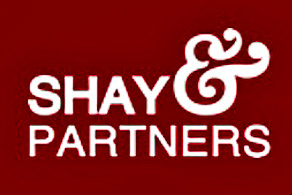
- Artist : Ms. Viola Liang
On September 10 2007 the National Communications Commission (NCC) delivered a new draft legal framework for communications entitled “Law Governing Communications and Broadcasting”. The bill contains 11 chapters and 185 articles in total. The NCC held six public hearings between September 26 and 28 2007 and has uploaded all official materials and video recordings from the hearing on its official website (www.ncc.gov.tw). The NCC plans to submit the bill for review by the Executive Yuan in early November 2007.
This bill centres on transforming regulation to reflect the trend of digital convergence. Addressing the areas of technological convergence, industry competition and social norms, the bill aims to:
● move with the trend of convergence by adopting a light-touch regulatory mechanism, so as to reduce operational costs and increase competitiveness in the communications industry;
● adopt a three-layer regulatory structure (the infrastructure layer, the operations layer, and the content and application service layer) and differential management by horizontal regulation;
● adopt different methods according to the different communication functions and simplify the licensing procedure;
● adopt a mode of unified legislation according to the nature of the communication;
● focus on the principle of light-touch regulation and separating services and licences;
● issue independently resource licences for different services;
● assure the principle of separation of network and services;
● introduce special treatment of broadcasting issues;
● minimize government intervention and safeguarding of market mechanisms;
● bring about self-regulation of media and introduce social heteronomy;
● create a seamless transitional period; and
● redefine the dedicated communication and its management.
This regulatory movement has drawn attention from all circles, including telecommunications operators, broadcasters, internet service providers, content producers, culture observers, academia and government officials themselves. In the three days of public hearings, topics of regulatory policy were confirmed after intense discussion, including the horizontal regulatory framework and the institutionalization of content regulation by self-regulation, heteronomy and law enforcement. However, many argued that this radical move at such short notice was merely another example of the NCC jumping to conclusions and not being flexible enough to accommodate both the old and new approaches. It is therefore hard to imagine that such a sophisticated bill will be well drafted and come into force within four months, before the expiration of the current NCC commissioners’ term. Grey areas such as Internet Protocol television, mobile television and bundled services remain unresolved in the draft bill. Unfortunately, as yet the NCC has provided no clarification on these.
The goal of the new legislation is to harmonize the discrepancies between the telecommunications legislation and several broadcasting laws in order to regulate the growing industry across different technologies. However, it is not clear how the NCC plans to accomplish its goal with numerous chapters of regulations grafted from the existing vertical legislation. For instance, the emerging mobile television service appears as a telecommunications multimedia transmission service (eg, MobiTV and iPhone in the United States) under the proposed regulation. However, a mobile television could also be regulated as a broadcasting service if the service were delivered via digital, terrestrial (such as KFT and LG Telecom in Korea) or satellite (eg, SK Telecom in Korea). The three identical services, as far as user experience is concerned, will be subject to different regulatory requirements ranging from content to foreign ownership depending on their delivery technologies.
This proposed legislation defeats the whole purpose of horizontal service regulation regardless of the delivery platform.
The materials contained on this website are for general information purposes only and are subject to the disclaimer.

